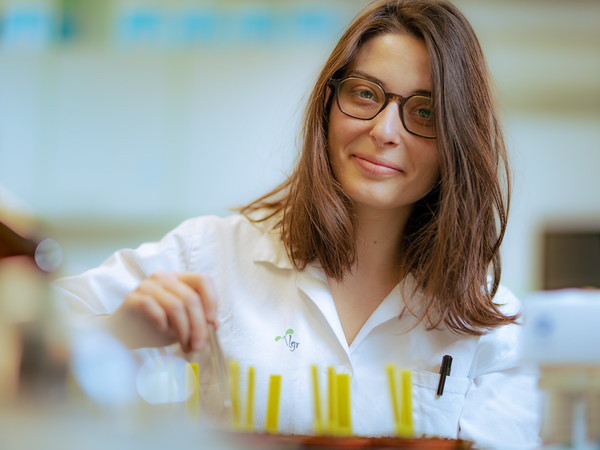Belgian, Czech and British scientists have made a significant contribution to understanding how vascular bundles in plant roots develop. They have proved that interactions between the plant hormones cytokinins, and proteins that regulate their concentration in cells, play a key role in this complex process. The knowledge gained can help in the future, for example, in breeding more drought-resistant crops. Experts from the Laboratory of Growth Regulators, a joint workplace of the Institute of Experimental Botany of the Czech Academy of Sciences (CAS) and Palacký University participated in the research. The results of the work of an international team of scientists were published by the prestigious journal Nature Plants.
The study focused on the vascular bundles in the roots of the arabidopsis (Arabidopsis thaliana). “Cytokinins control the growth and development of vascular bundles in the roots. The Olomouc team was able to identify molecular processes that directly affect the content of these plant hormones,” said Ondřej Novák from the Laboratory of Growth Regulators.
Tailor-made roots
The researchers found that certain regulatory proteins – proteins that affect the activity of genes for enzymes that produce or degrade plant hormones cytokinins – are essential for the development of vascular bundles. “Precisely tuned levels of cytokinins in various parts of the emerging vascular bundle determine its anatomical structure,” specified Novák, according to whom the roots of the plant are an excellent object for the study of developmental biology.
“Each root is covered by a ‘cap’, in which new cells are formed by division. They gradually specialise in various functions and create individual anatomically distinguishable parts of the root,” explained Novák, According to whom, knowledge of the mechanisms that control the development of vascular bundles in the roots may have practical use in the future. “By modifying the relevant genes, it would be possible to obtain crops with a root system ‘tailored’ to the requirements of growers. As a result, new varieties would be better able to withstand drought, as they would be able to draw more water from the soil or obtain mineral nutrients more efficiently,” added the scientist.
New pieces to the puzzle
The vascular bundles run through the centre of the root along its entire length and consist of three parts. Wood (xylem) transports water with mineral nutrients from the roots to the stem and leaves. Bast (phloem) mainly transports sugars and other organic substances. Between these two parts, at the young roots there is a procambium, whose cells later begin to divide and produce new cells of wood and bast. All components of the vascular bundles must develop in the right place and at the right time. Biologists already know some of the players involved in this process. However, many pieces are still missing in the conceptual puzzle. The aim of the new study was to supplement some of them.
The researchers assumed that the plant hormones cytokinins as well as the proteins TMO5 and LHW are important for the development of vascular bundles. Both proteins are transcription factors, which means that they control the activity of selected genes. The research therefore focused on finding genes that are linked to cytokinins and, simultaneously, are regulated by the TMO5/LHW pair.
Extensive analysis has revealed two genes for enzymes involved in cytokinin metabolism. One gene participates in their synthesis, while the other degrades them. Each works in a different part of the vascular bundle. “We have combined various experimental approaches that have enabled to map the activity of identified molecular players at the single cell level,” said Federica Brunoni of the Olomouc team.
Further experiments made it possible to describe the relationships between the genes, proteins and hormones involved. The TMO5 and LHW proteins are active only at the site of emerging xylem, approximately in the middle of the vascular bundle. There they trigger the production of cytokinins, the high levels of which then promote the development of xylem.
However, the neighbouring procambium needs fewer cytokinins to develop. This is also ensured by the TMO5/LHW pair, but indirectly. It “switches on” the gene for another regulatory protein, which travels from the xylem to the area where procambium is located and there conversely activates the gene for cytokinin dehydrogenase, an enzyme that degrades excess cytokinins.
“Specifically, our laboratory has helped to demonstrate that altering the activities of regulatory genes affects the cytokinin content at the tip of the root, where cells divide intensively. It has also been proven that the correct switching on and off of these molecular modules is essential for the proper formation of plant tissue,” added Brunoni.
In addition to experts from the Laboratory of Growth Regulators, Klára Hoyerová from the Laboratory of Hormonal Regulations in Plants of the Institute of Experimental Botany of the CAS, scientists from Ghent University and the VIB research institute in Belgium, and scientists from the University of Nottingham also took part in the research.
